
Patton Left Legendary Mark On NCAA Sprints
In the heats of the 1947 NCAA Championships, Mel Patton of Southern California equaled the 100-yard world record of 9.4, but amazingly he didn’t get any credit for the world record.
Even though the wind reading was 1.9 meters per second – less than the legal limit of 2.0 required by the IAAF and AAU – NCAA rules at the time had a limit of 3 miles per hour (1.3 m/s), so the performance was not submitted as a world record. (The NCAA changed its rule to 2.0 m/s the next year.)
It wouldn’t be the last time that Patton – who went on to win the first of his five NCAA sprint titles – lost world record recognition over inconsistent rules.
It happened again in 1948, but this time in the 200 meters as Patton followed up his first NCAA sprint double with an Olympic Trials win in the 200. The 200 that year was held on a turn – just as in the London Olympics that he won later that summer were – and Patton ran 20.7, equal to the fastest ever.
At least Patton was in great company: The other 20.7 belonged to none other than Jesse Owens when he won gold at the 1936 Olympics. (The IAAF did not recognize races on curves for record status until 1951.)
Did Patton ever get credit for a world record? Yes, and two of his most remarkable WRs happened in a week’s time to better a pair by Owens from his famous Day of Days at the 1935 Big Ten Championships.
In the 1949 USC-UCLA dual meet, Patton – nicknamed “Pell Mel” – ran a straightaway 220 yards in 20.2 to break Owens’ WR of 20.3, then a week later followed it with history’s first 9.3 100 yards.
Of the 9.3, Patton commented, “I can hardly believe it is true. I really don’t believe I was going as fast as that. It didn’t feel to be my fastest race.”
Patton completed a second-straight 100/200 double at the NCAA Championships in 1949, winning both at the Los Angeles Memorial Coliseum, nearly on the USC campus. His five NCAA outdoor sprint titles is one short of the all-time best of six set by Marquette’s Ralph Metcalfe (1932-34).
The NCAA and collegiate track & field will mark a momentous milestone in the spring of 2021 -- the 100th anniversary of the NCAA Championships and with that, the NCAA Track & Field Championships. In June 1921, the University of Chicago hosted the first track & field championships in NCAA history.
This point can’t be emphasized enough: Not only was the event the first for NCAA track & field, but the first championships for any sport under the sponsorship of the NCAA.
To celebrate, over each of the next 365 days, the U.S. Track & Field and Cross Country Coaches Association (USTFCCCA) will celebrate moments, student-athletes, and coaches that have made a century’s worth of championships special. From humble beginnings to important historical milestones to the modern-day, collegiate track & field has evolved with the American society.
The 2021 edition of the NCAA Division I Outdoor Track & Field Championships begin with preliminary round action on May 27-29 in Jacksonville, Fla., and College Station, Texas. The championships final site and culmination of the celebration is slated for June 9-12, 2021 at the newly rebuilt Hayward Field in Eugene, Ore.
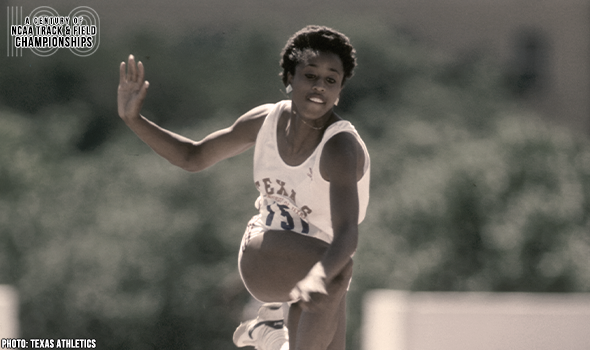
Texas’ Turner Soared To Triple Jump Greatness
Terri Turner was a two-time TJ champion at the NCAA DI Outdoor T&F Championships. When Turner won her 2nd title in 1986, she set an all-time world best of 13.66m (44-9¾).
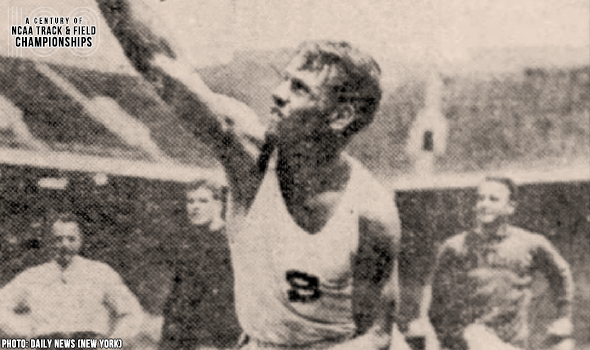
Stanford’s Rothert Starred In The Shot Put
Harlow Rothert won three consecutive shot put titles at the NCAA Outdoor T&F Championships between 1928 & 1930. He set meet records in both 1929 and 1930.

Indiana’s Kharun Set Javelin MR In 2003
Irina Kharun won the javelin title at the 2003 NCAA DI Outdoor T&F Championships with a meet record heave of 61.82m (202-10). It also helped her win by more than 30 feet!
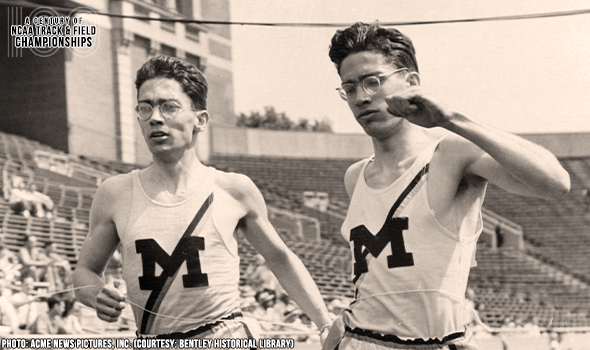
Hume Brothers Had Officials Seeing Double
Twins Robert & Ross Hume purposefully tied for the mile crown at the 1944 NCAA Outdoor Track & Field Championships. They tried again in 1945, but officials gave Ross the win.
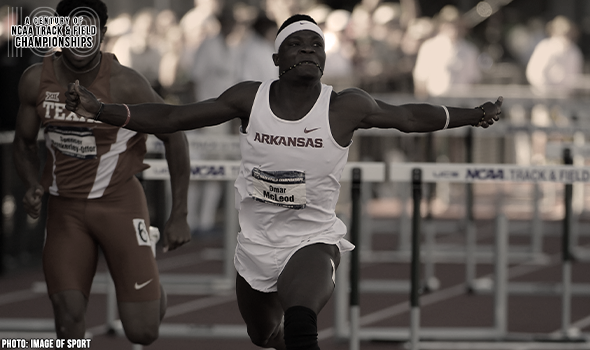
Woo Pig Sooie! McLeod Sizzled Track In 2015!
Omar McLeod clocked a sizzling 13.01 (+3.9) to win the 110HH at the 2015 NCAA DI Outdoor T&F Championships. Only one man had ever gone faster in meet history at the time.

Felicien Starred In The 100H At NCAAs
Perdita Felicien won back-to-back 100H titles at the NCAA Division I Outdoor T&F Championships in 2002 & 2003. She set a MR of 12.68 in the semifinals on the way to title No. 2.

Truly “Unbroken,” Zamperini Shined At NCAAs
Louis Zamperini set a meet record in the mile of 4:08.3 at the 1938 NCAA Outdoor T&F Championships. Zamperini, who also won the mile in 1939, saw his record last 15 years.
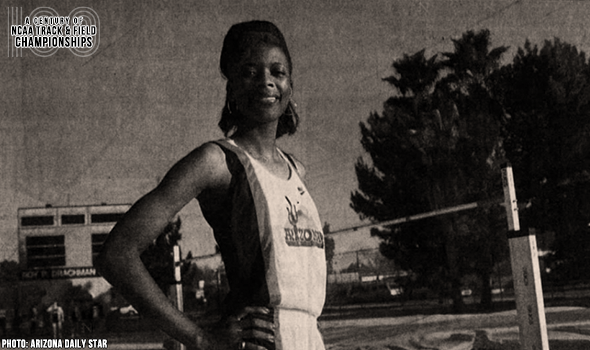
Hughes Soared To Three Consecutive HJ Titles
Tanya Hughes was the first woman to win three high jump titles at the NCAA Division I Outdoor T&F Championships. Hughes did so consecutively in 1991, 1992 & 1993.
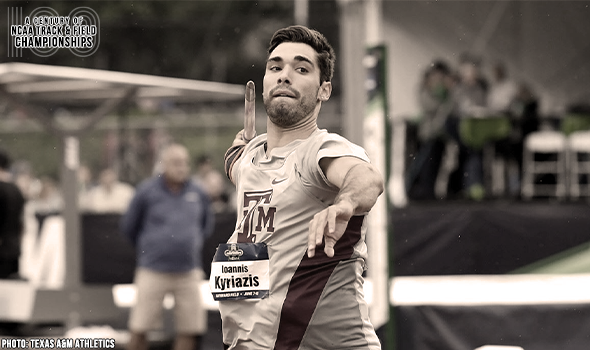
Kyriazis Made Point With Javelin In 2017
Ioannis Kyriazis set a meet record in the javelin of 82.58m (270-11) and won by more than 19 feet at the 2017 NCAA DI Outdoor T&F Championships.
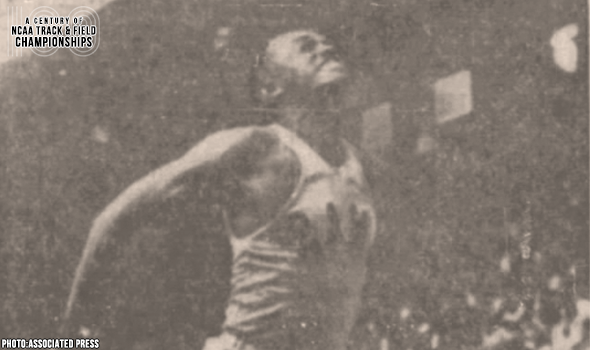
Sharpe Bounded To Meet History In 1956
Bill Sharpe became the first man to eclipse the 50-foot barrier in the triple jump at the NCAA DI Outdoor T&F Championships in 1956. Sharpe won with his 15.36m (50‑4¾) effort.

